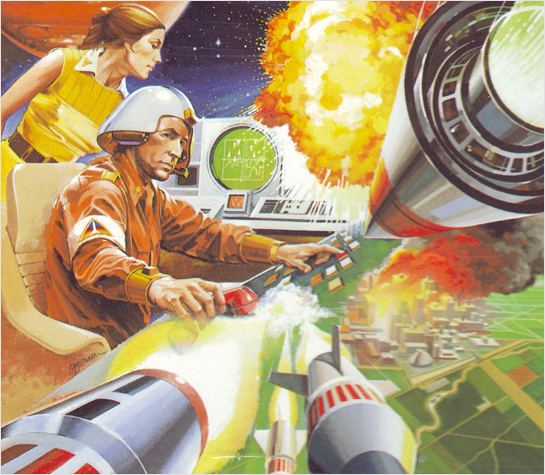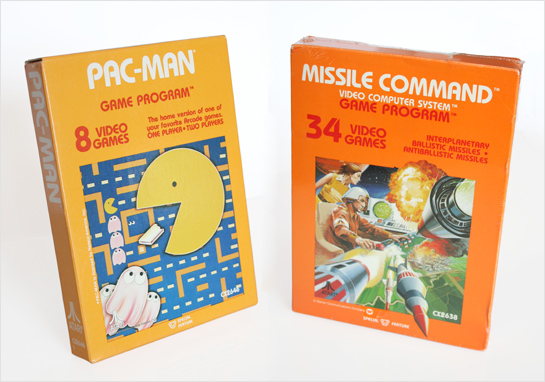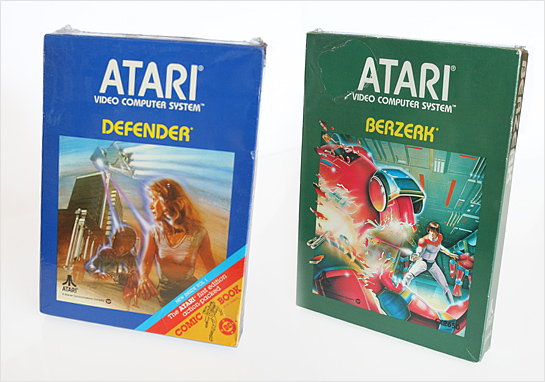
My Dad brought home our first video game system in 1983, when I was but five years old. The Atari 2600 had already become a gigantic, category-defining success, spawning a whole new industry of home video games. In the six years since its release, Atari had used its marketing muscle in TV commercials, ads in comic books and magazines, and I wanted one. From the moment my Dad pulled out the box from Video King, I was hooked.
Like any self-respecting child of the ’80s, I loved Pac-Man, Berzerk, Joust, Enduro, and many others. Countless hours were logged in front of my 2600, racking up high scores in Space Invaders, Kaboom! and a slew of other blocky graphic games.
But it wasn’t just the games that enthralled me. A major part of the overall experience wasn’t just playing the game, but putting myself into that imaginary world. And since the graphics were so simple (some might say crude), a huge window into the world of those games was the box artwork.

I would stare at the beautiful illustrations on games like Defender, Missile Command, and Breakout for hours, letting that art be the bridge between the imaginary world I’d conjured and my pixelated adventures on our Zenith TV. From that early age, I got a great sense of the significant power in artwork, and packaging as a crucial part of the brand experience.
In this Atari world, the artwork of such greats as Steve Hendricks, Cliff Spohn, and George Opperman played a pivotal role in pulling wide-eyed kids into a engrossing story, then connecting those dots with the dots (almost literally) on the screen. I wasn’t just a little man running through a maze, shooting a smiley face anymore — I was a ’70s jumpsuit-wearing spaceman, marooned in the catacombs of a hostile planet, facing off against the Evil Otto.

Those images and characters stayed with me throughout the years, leaving an indelible impression on my visual memory. Somewhere in the subconscious regions of my brain, I think the graphic designer in me was born on that day in 1983, hooked on the visuals of that particular moment in time.
Those designs still resonate with me today, and stir up great associations and memories, reinforcing the power that great brands have on us. This is the kind of connection that all great organizations seek to have with their audiences, and the sort of fanaticism that powerful brand experiences engender. As brand identity designers, we seek to cultivate and refine the stories of our clients, mining the best parts of their brands, and getting those stories out into the world.
If a brand is doing things well, they will have already built a strong relationship with their audience, and positive experiences serve as another voice that adds meaning, legitimacy, and power to the organization’s story. These relationships between audience and brand can even outlast the companies and products themselves (much like Atari, which has died and been rebooted several times in 30+ years). These relationships with brands are forged powerfully, and my relationship with Atari has helped mold me into the kind of designer I am today.
[Note: All these game box images were shot at Hexanine, and come from the nerdy collection of Tim.]
ดอกไม้งานศพ
blog topic
web hosting
How Atari Made Me A Designer « Zeroside
will goyard renew your wallet
How Atari Made Me A Designer « Zeroside
Creative web agency who love bukkake